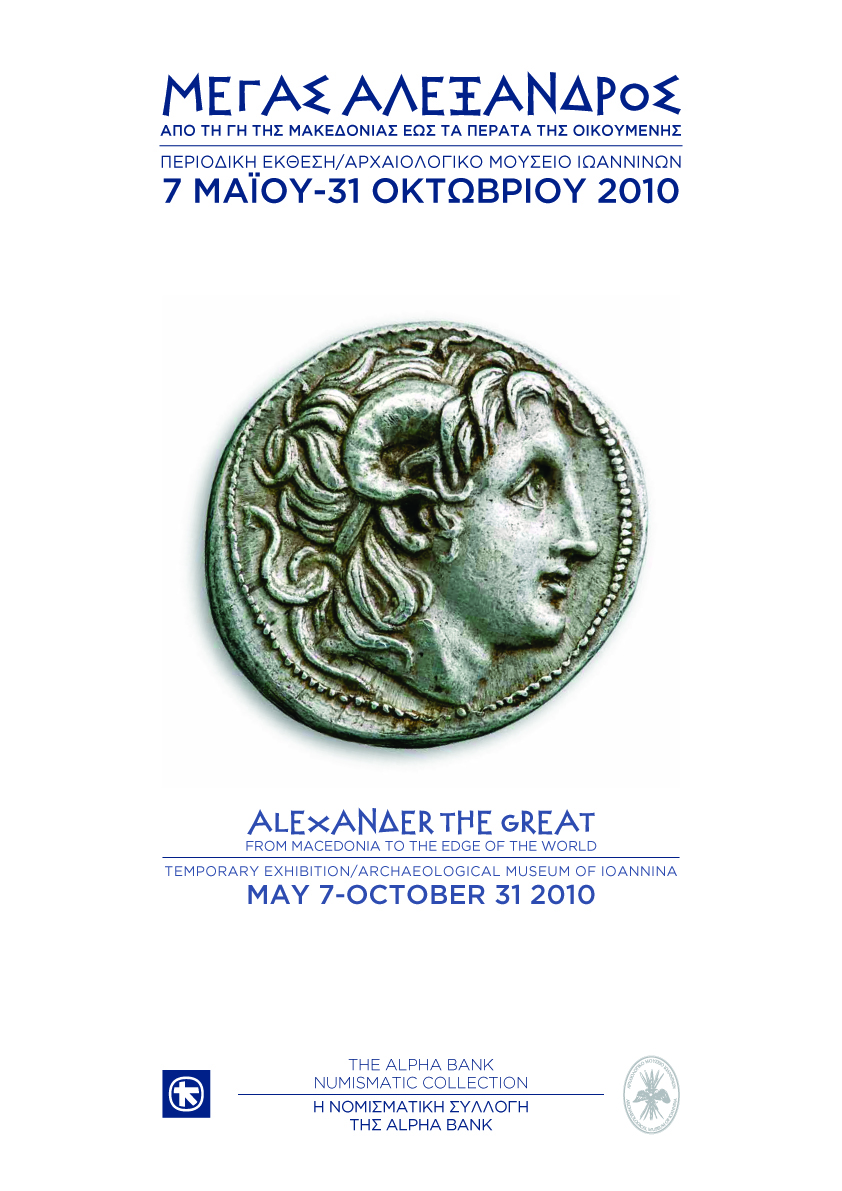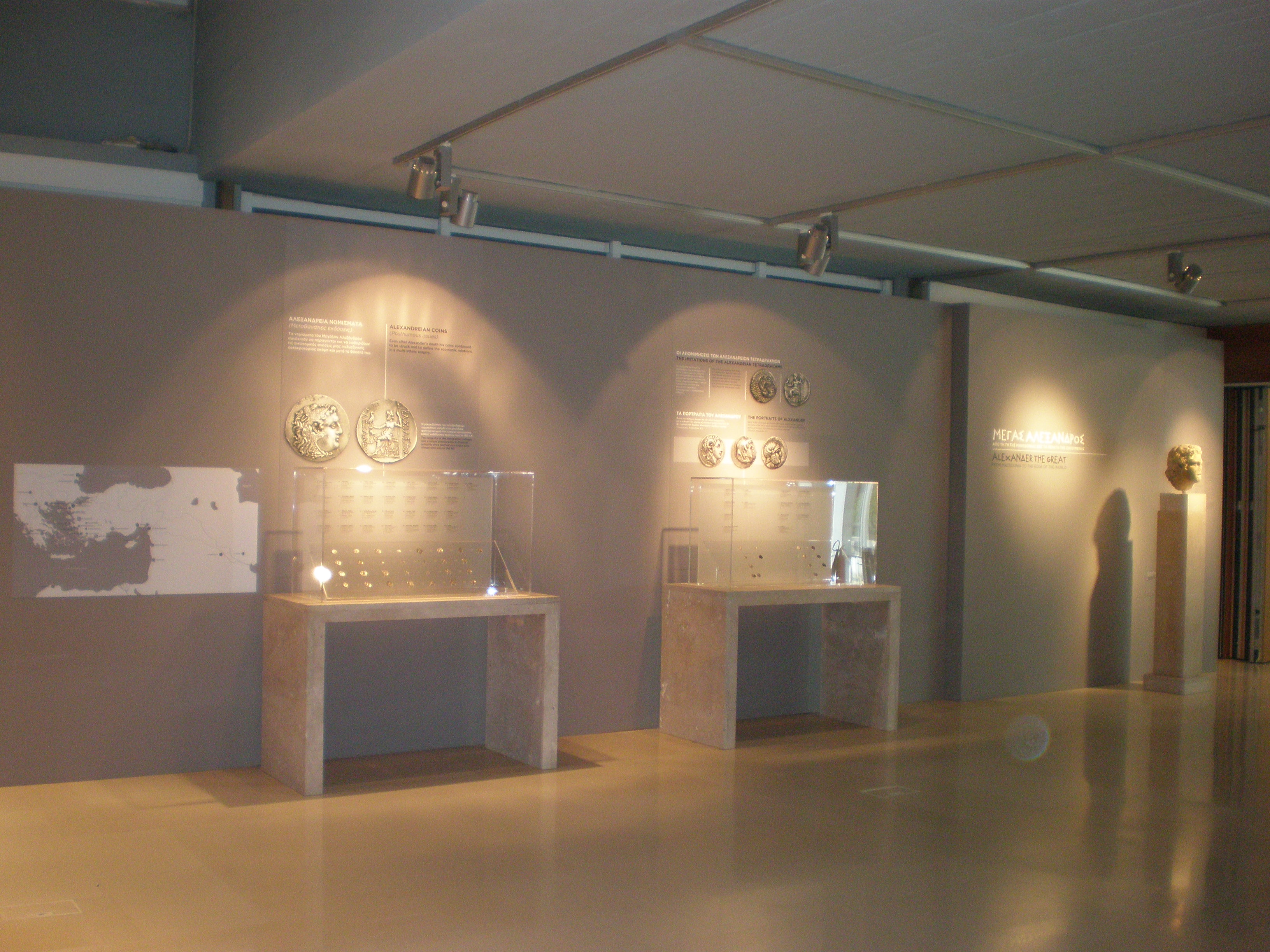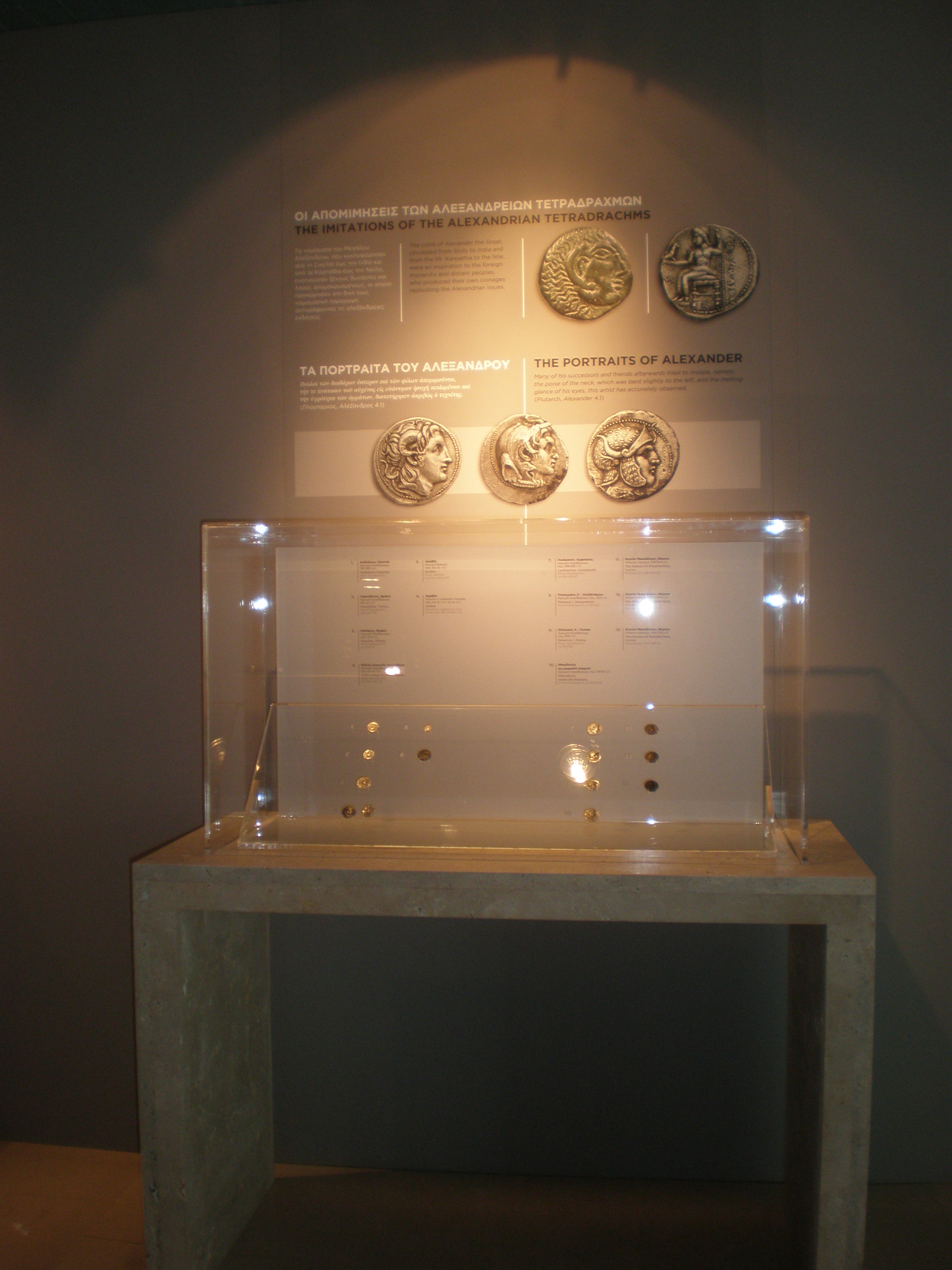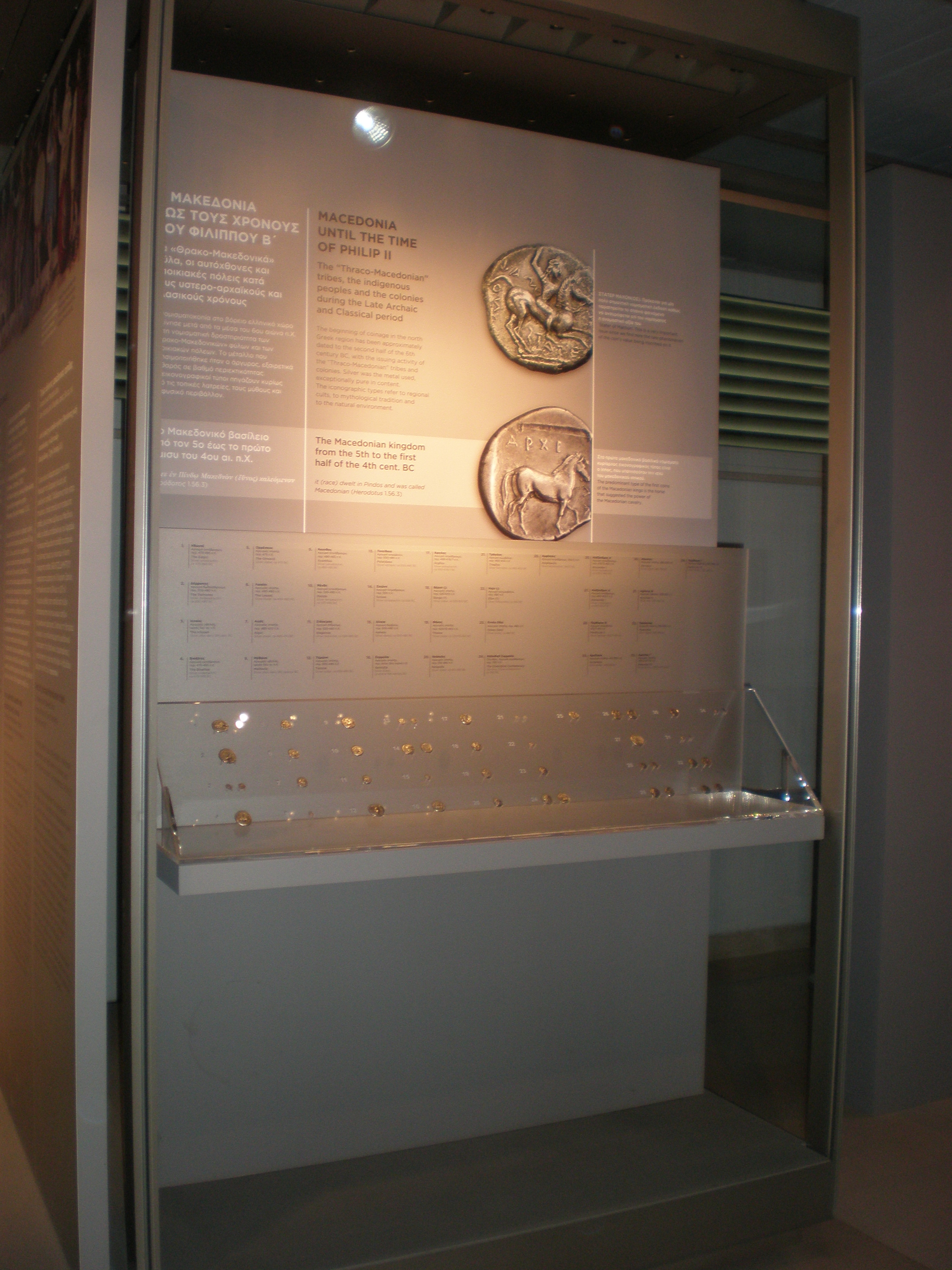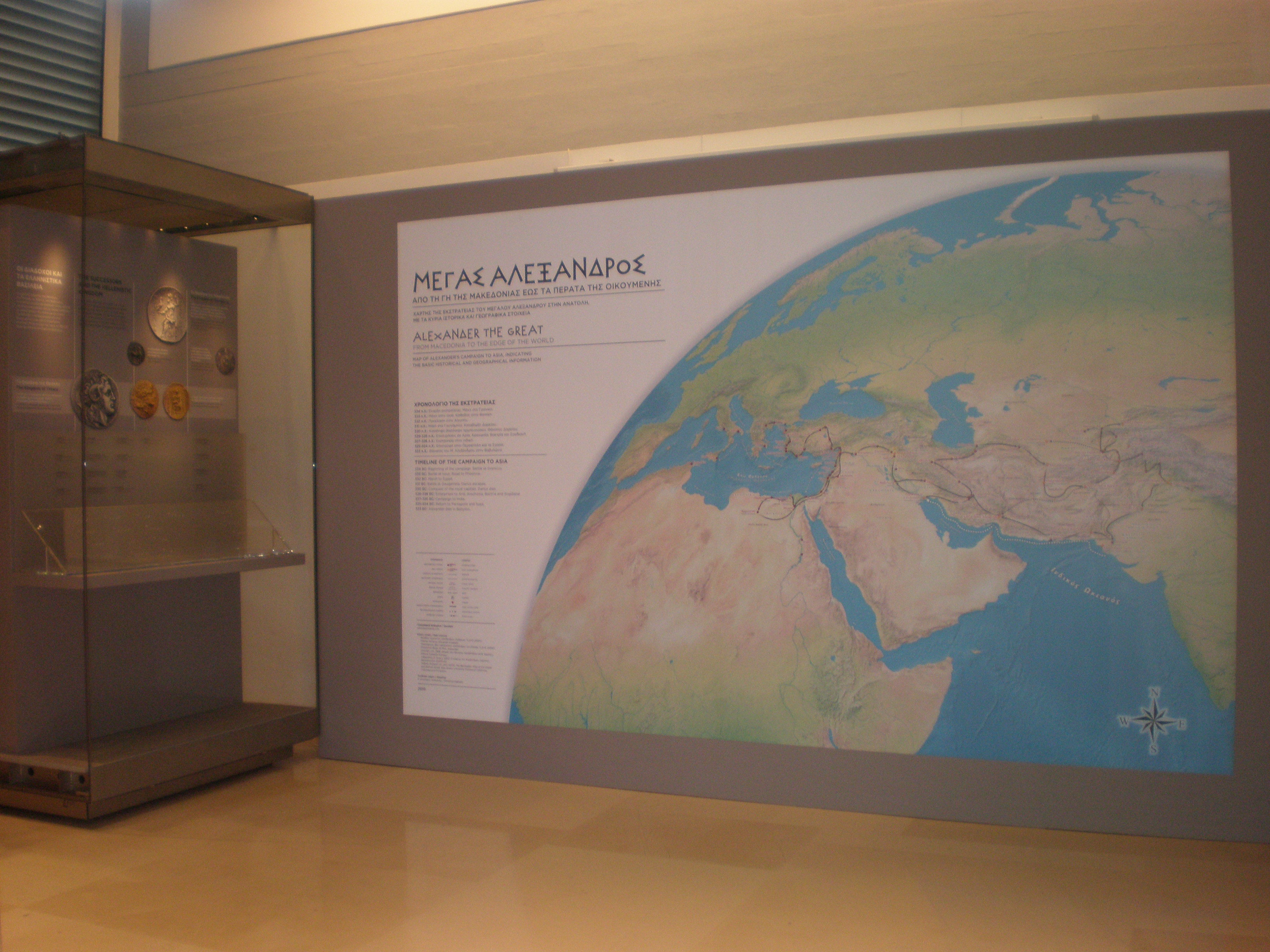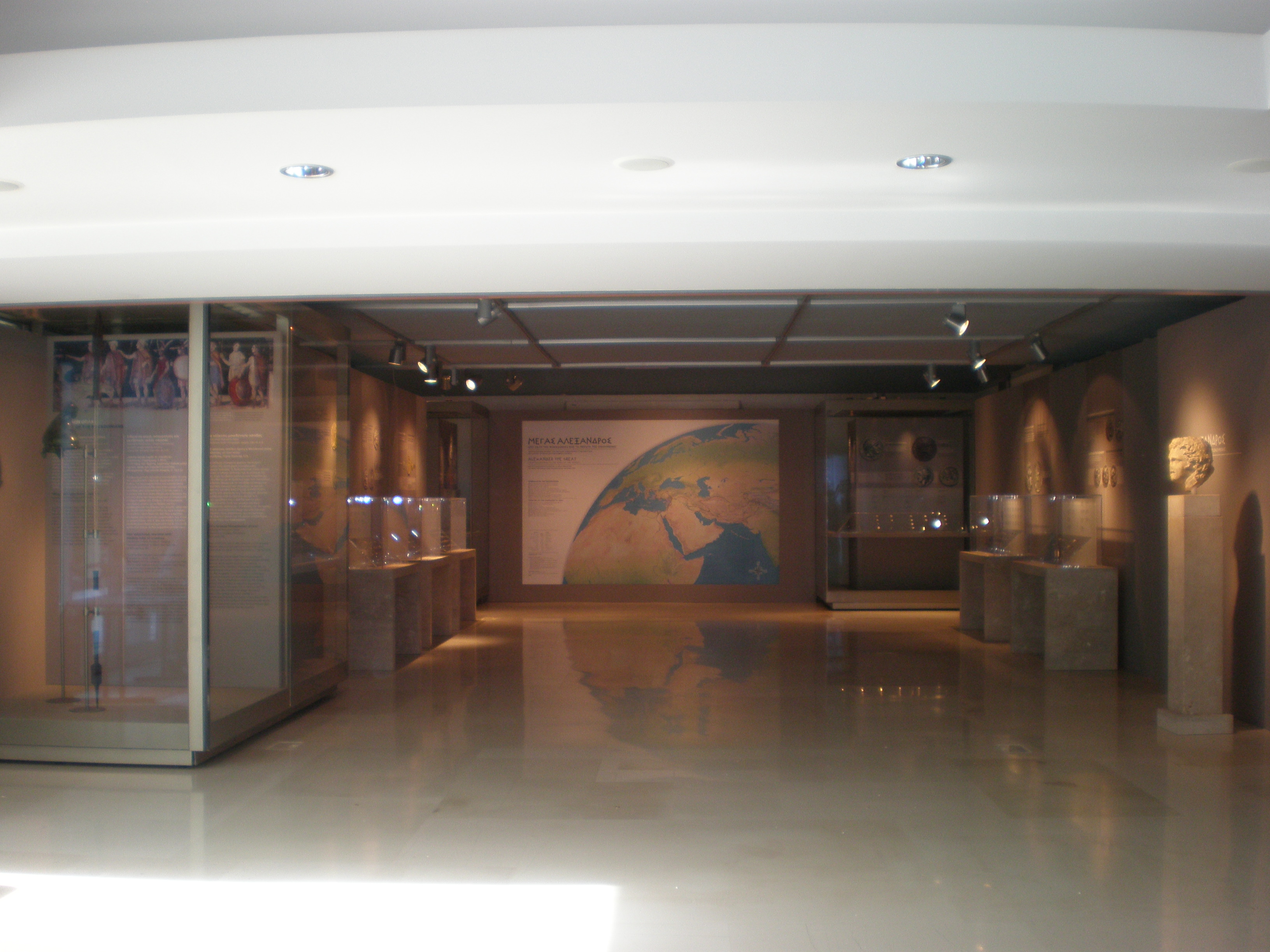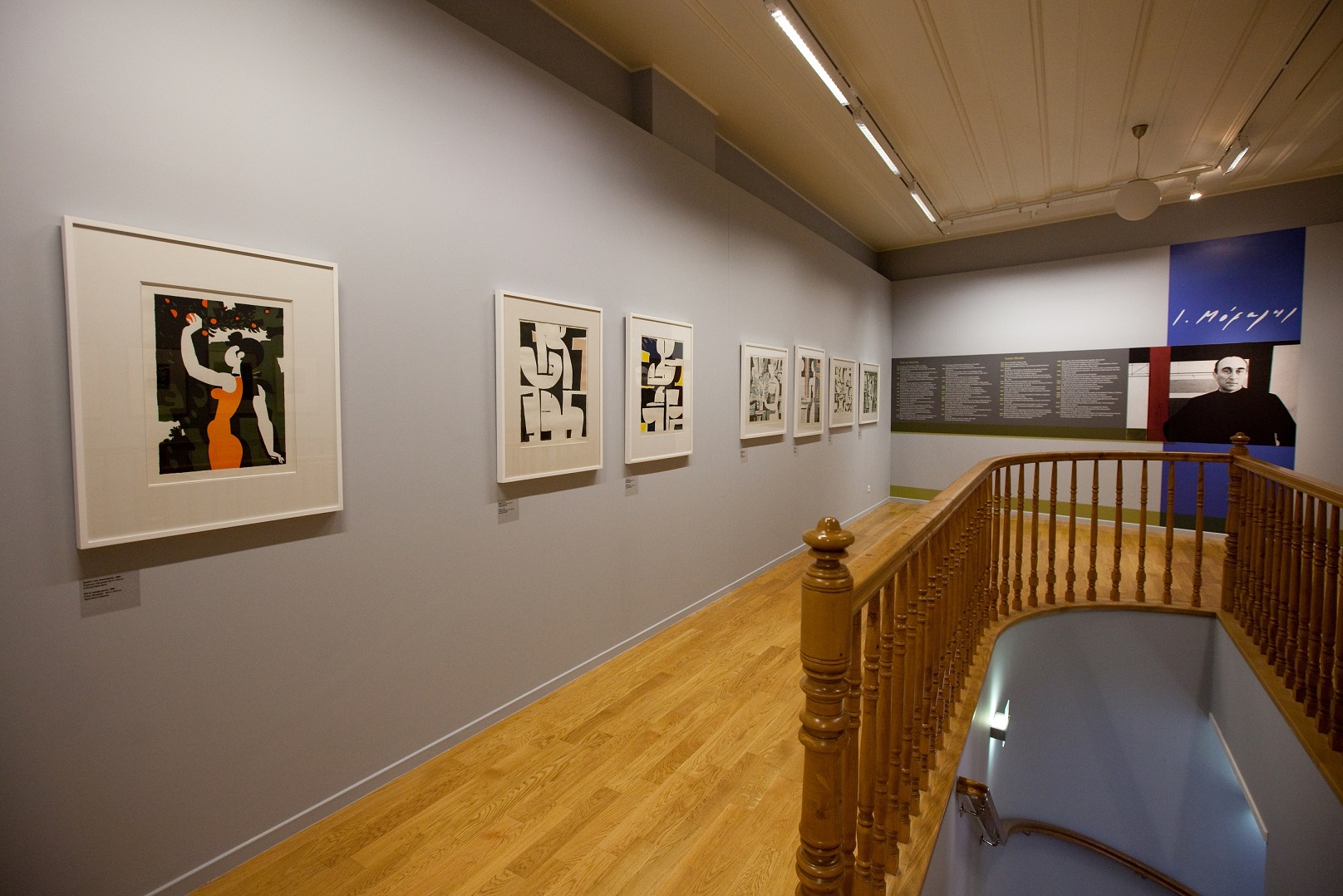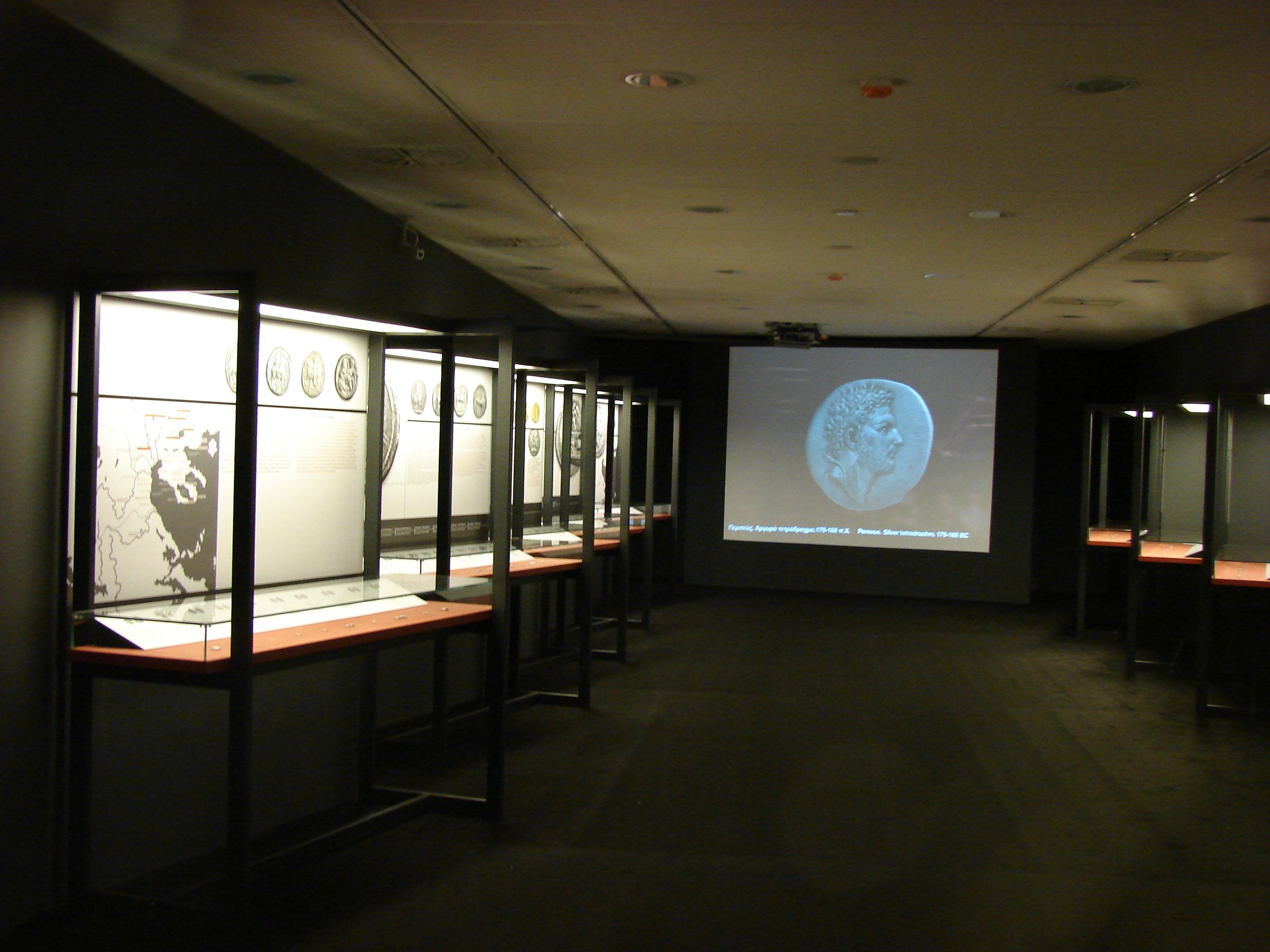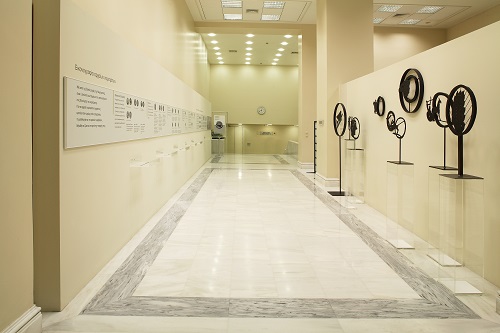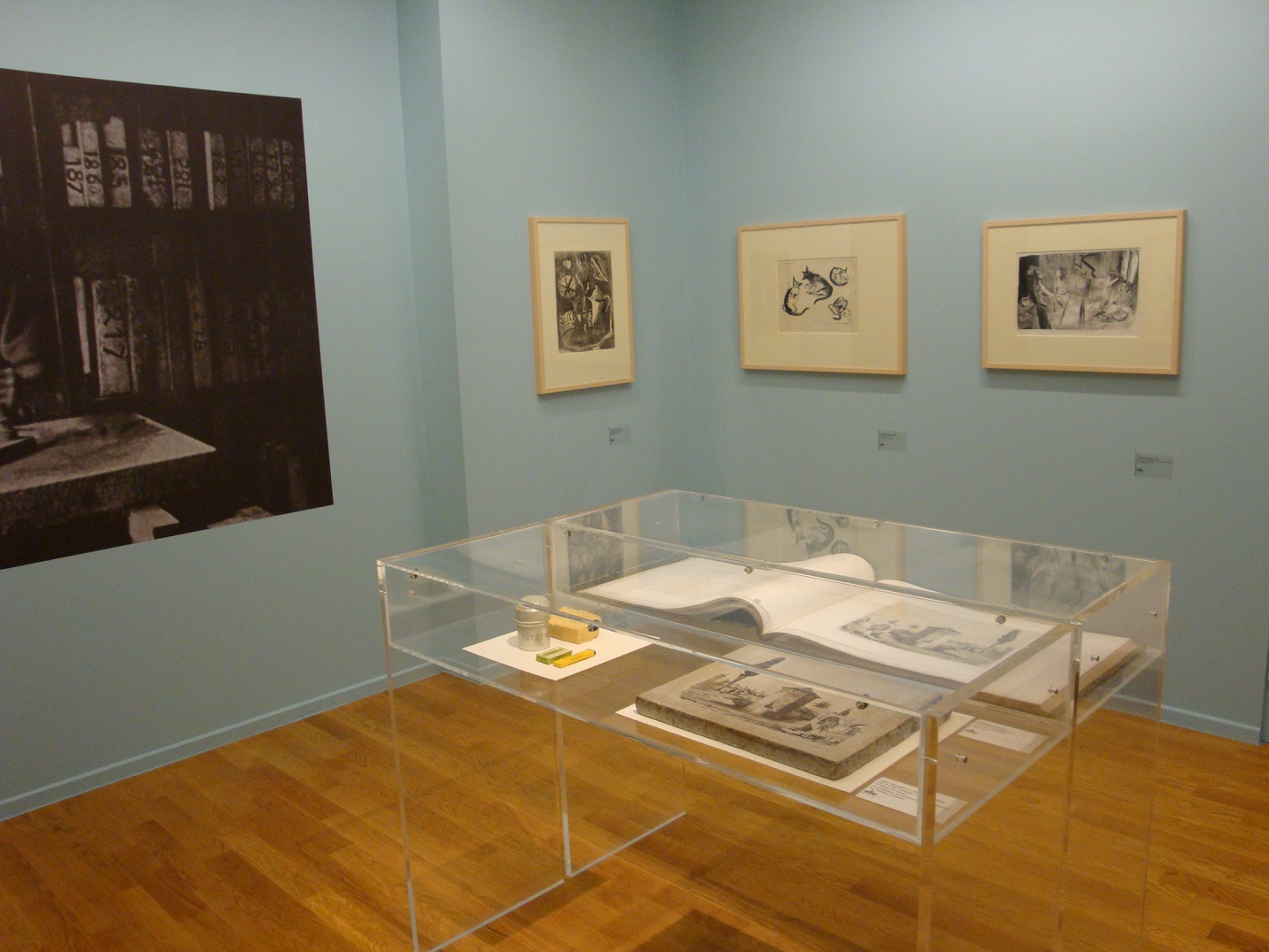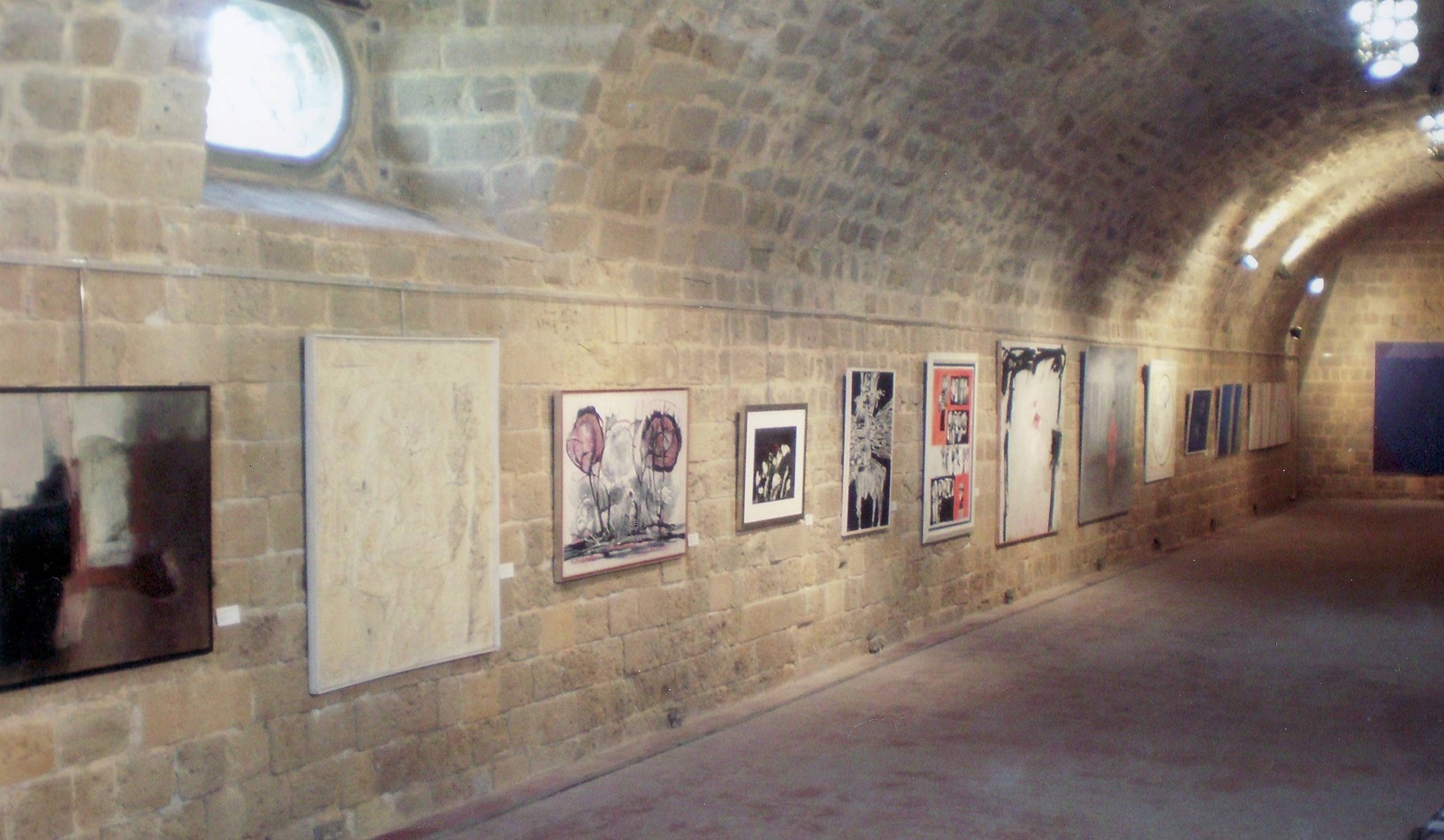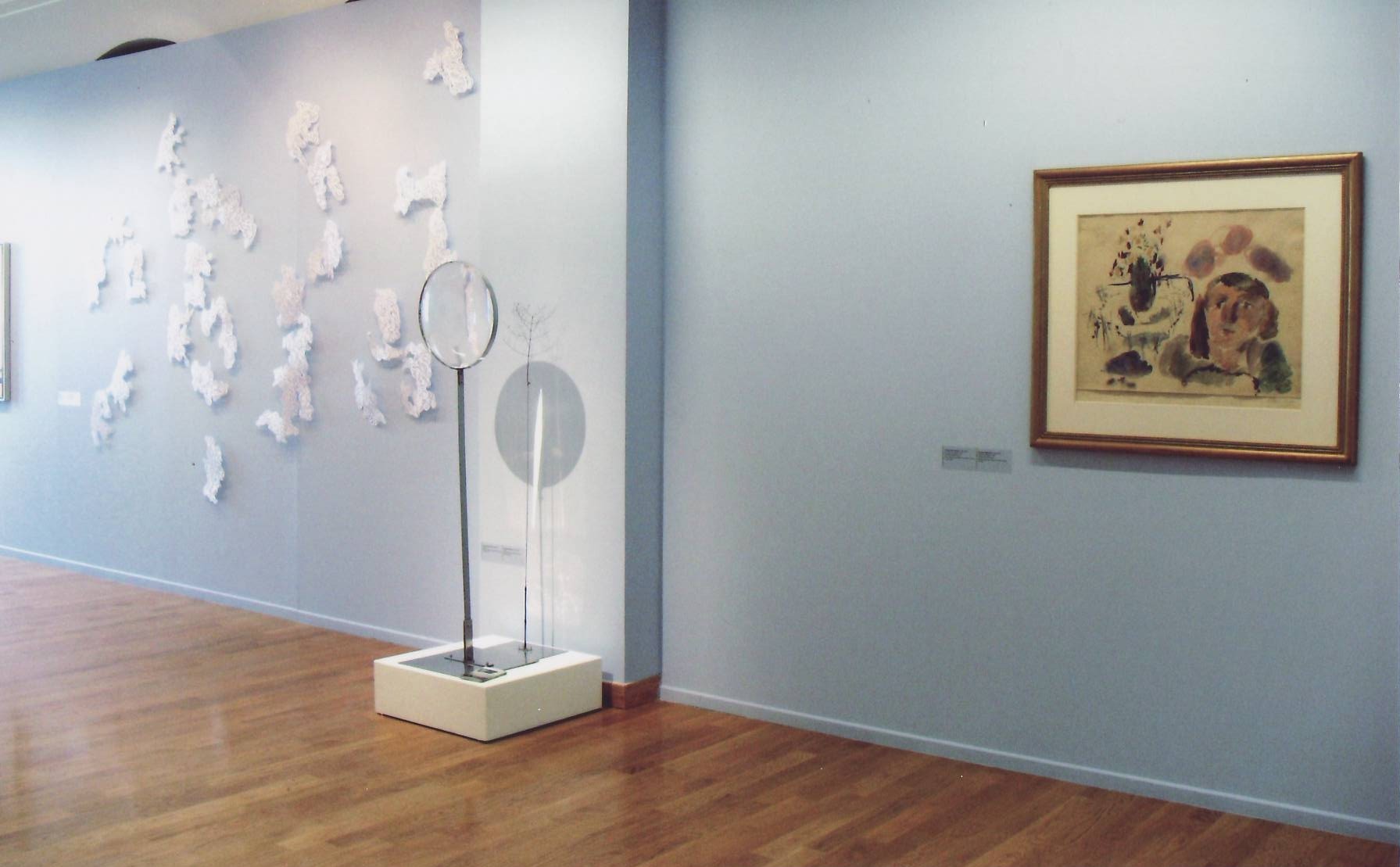ENDED
Exhibition “Alexander the Great: From Macedonia to the Edge of the World”
The exhibition “Alexander the Great: From Macedonia to the Edge of the World” tells the story of the Macedonian king through his coinage. It also examines the impact of coins on the ancient world, even after his death. One section of the exhibition is dedicated to Macedonian weaponry.
A fascinating story
The exhibition tells the story of Alexander the Great through his coinage. It presents the impact of coins on the ancient world, even after the death of the Macedonian king.
To better understand and document the coin types and history of Alexander the Great, one section of the exhibition is dedicated to Macedonian weaponry.
Structure of the exhibition
The exhibition is structured in 8 thematic sections:
- Macedonian weaponry: The helmet, the shield and the sarissa. The helmet and the shield are iconographic types of Macedonian coins.
- Macedonia up to the time of Philip II: The numismatic history of Macedonia up to the time of Philip II.
- Philip II: The coinage of the father of Alexander the Great.
- Alexander III, the Great: The personal coinage of the Macedonian king.
- The successors and the Hellenistic kingdoms: Coins minted by the successors of Alexander the Great.
- Alexandian coins. Posthumous issues: Coins issued for 2 centuries after the death of Alexander, from Macedonia all the way to Babylon and Egypt.
- Imitations of Alexandian tetradrachms: Celtic and Arabic coins.
- Portraits: Coins depicting Alexander the Great.
The exhibits
The exhibition showcases 220 gold, silver and bronze coins from the Alpha Bank Numismatic Collection.
Apart from coins, exhibits include 1 phrygian-type helmet from the Archaeological Museum of Ioannina (Vitsa, Zagori).
They also include part of a Macedonian shield from the 27th Ephorate of Prehistoric and Classical Antiquities (Dion, Pieria), as well as part of a sarissa from the 17th Ephorate of Prehistoric and Classical Antiquities (Ancient Aigai).
Lastly, the exhibition prominently showcases the marble head of Alexander from the 7th Ephorate of Prehistoric and Classical Antiquities (Ancient Olympia).
Philip II, the ruler of Greeks
In 338 BCE Philip II was recognised as leader of a confederation encompassing all Greek city-states, except Sparta.
Philip wanted to commemorate the Panhellenic union he had achieved. So, he introduced new types in Macedonian coinage. Among them was the head of Olympian Zeus, as a Panhellenic symbol.
Yet another type introduced by Philip was the young athlete riding a horse, commemorating the king’s victory at the Olympic Games held in 356 BCE.
Philip II was the first king to adopt bimetallism, that is he issued both gold and silver coins at the same time.
The coinage of Alexander the Great
The personal coinage of the Macedonian king started with Alexander minting a series of silver staters depicting the head of Zeus and the eagle. Today these coins are considered rare.
Later on, Alexander got hold of the vast quantities of Persian gold and silver. So, he minted numerous new coins and created the conditions for a single monetary policy. This was unprecedented in the area of the Mediterranean and the Asian inland.
The common coin he established, Alexander’s tetradrachm, was minted based on the widely accepted Attic weight standard.
It became the first international currency of antiquity during Hellenistic times and flooded the east-Mediterranean markets.
Alexander’s successors
After the sudden death of the renowned general in 323 BCE, his empire was divided into 4 kingdoms:
- Cassander in Macedonia.
- Lysimachus in Thrace.
- Seleucus I in Syria.
- Ptolemy I in Egypt.
One of the first things the successors did was to issue coins. Except its apparent impact on finance, this practice was also important as an act of political propaganda.
The portraits of Alexander the Great
The successors of Alexander the Great opted for their coin types to refer to the great general. Such types:
- Confirmed the legitimacy of succession.
- Reminded people of the successors’ descent in case their rule was disputed or challenged by another king.
- Established their authority.
This way Alexander the Great became the first well-known mortal depicted on coins.
A coin that stands out in the exhibition is the tetradrachm of Lysimachus with the deified head of Alexander the Great.
In the same room visitors may also admire the marble head of Alexander from Olympia.
Scientific team and contributors
Exhibition curators:
- Dr Dimitra Tsangari, curator of the Alpha Bank Numismatic Collection.
- Konstantinos Zachos, curator of antiquities and director of the Archaeological Museum of Ioannina.
Artistic and architectural design: Stamatis Zannos.
Guided tours
Guided tours for the general public, as well as specially organised tours for schools, are also available.
Educational programme “A Day at an Ancient Mint”
In the context of the exhibition an educational programme is also available: Children have the opportunity to paint and mint their own coin, using copies of ancient dies.
Exhibition catalogue
The exhibition is accompanied by the catalogue-album Alexander the Great. From Macedonia to the Edge of the World. The publication contains a wealth of photographic material and is available in Greek and in English. It was edited by Dr Dimitra Tsangari, Konstantinos Zachos and Katerina Liampi.
Buy the publication Alexander the Great. From Macedonia to the Edge of the World on the Alpha Bank e-shop.
Press Releases
For more information about the exhibition “Alexander the Great. From Macedonia to the Edge of the World” you may read the relevant Press Releases issued by Alpha Bank:
